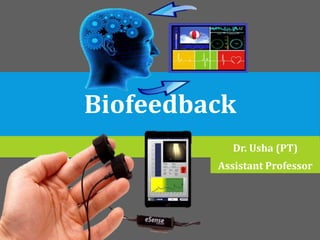Biofeedback is a technique that educates individuals how to control specific bodily functions by using signals from their own physiology. This method includes using sensors that monitor physiological responses such as heart rate, muscle tension, and skin temperature. By providing immediate feedback, patients can discover to recognize their body's responses to pain and stress. This consciousness allows them to develop strategies to manage their pain more effectively. For instance, if a person observes that their muscle tension increases when they are in pain, they can utilize relaxation techniques to help reduce that tension.

One of the primary benefits of biofeedback is that it empowers patients to take an active role in their pain management. Instead of depending solely on drugs or treatments from medical providers, patients can gain to comprehend and regulate their own physiology. This sense of control can lead to enhanced confidence and a brain mapping for neurofeedback therapy more positive outlook on life. Many patients report feeling more in charge of their pain and less like victims of their condition. This shift in mindset can significantly enhance their quality of life.
Research has shown that biofeedback can be effective in reducing chronic pain symptoms. Studies indicate that patients who use biofeedback methods often experience less pain and improved physical function. Additionally, biofeedback can help reduce anxiety and stress, which are common issues for those living with chronic pain. By tackling both the physical and psychological aspects of pain, biofeedback provides a comprehensive approach to pain control. This integrated method can lead to superior outcomes for individuals, allowing them to participate more fully in their daily activities.
In conclusion, biofeedback is a valuable tool for transforming chronic pain management. By teaching individuals to comprehend and regulate their physiological reactions, biofeedback enables individuals to take control of their pain. This approach not only helps reduce pain but also enhances overall quality of life. As more people seek options to conventional pain control methods, biofeedback emerges as a potential option. With continued research and awareness, biofeedback could become an integral part of chronic pain therapy, helping patients lead more fulfilling, more satisfying lives.